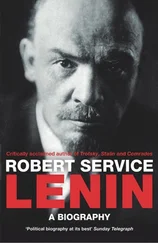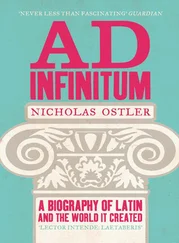Among writers on the history of the Soviet Union – whether Westerners or Russian émigrés – it was not uncommon to trace events back and to seek a point at which ‘things might have gone differently’. Many have wondered whether, had Lenin not died so early in the life of the regime, the country might have developed along less militaristic and politically sterile lines. Perhaps the New Economic Policy, allowing peasants – more or less – to work for themselves, and permitting a degree of latitude in cultural life, would have continued and led to a more tolerant order of things. In the early years of glasnost this idea was widely debated by Russian as well as Western scholars. Among the latter were many who could not accept that any good could have come from Lenin and his creations, while some still retained a lingering doubt that such an intelligent man as Lenin could possibly have initiated and carried through the inhuman collectivization and the great terror of the 1930s. In Russia, as long as the Soviet state continued to exist, Lenin remained a virtually unblemished icon.
Dmitri Volkogonov has now demolished the icon, and he has firmly committed himself to the view that Russia’s only hope in 1917 lay in the liberal and social democratic coalition that emerged in the February revolution. He has, in other words, concluded that there was no salvation to be found in any of the policies practised by Lenin, and he has taken his account further to show how Lenin’s malign influence was imbibed by all subsequent Soviet leaders. Indeed, the Party leaders, he shows, quoted Lenin and referred to his teaching, not just when mouthing their pious platitudes for the populace, but even when they were closeted in the privacy of the Politburo. Having absorbed a philosophy that had failed almost before it was put into practice, it should have caused little surprise that the practitioners of Leninism in the modern age would ultimately share a similar fate.
The massive steel door swung open and I was ushered into a large lobby, from which a similar reinforced door led to the Communist holy of holies, Lenin’s archives. The former Central Committee building on Staraya Square in central Moscow is a vast grey edifice the size of an entire city block. Along its endless corridors are the identical wood-panelled offices where the Party hierarchs once sat, dozens of meeting rooms of all sizes, a great reading room lined with catalogues and indexes to the Party’s meticulously preserved records. And deep in its basement, reminiscent of a nuclear bomb-shelter, on special shelves in special metal boxes, I was shown all the written traces to be found of the man still regarded by some as a genius, by others as the scourge of the century.
Despite the fact that there have been five editions of his collected works in Russian (the fourth of which was translated into many foreign languages), these are Lenin’s unpublished documents, numbering 3724 in all. Another 3000 or so were merely signed by him. Why were they hidden away? Could it be that his halo would have been tarnished by publishing, for instance, his instructions in November 1922 to punish Latvia and Estonia for supporting the Whites by such means as ‘ catching them out ’ with more and more evidence, by penetrating their borders ‘in hot pursuit’ and ‘then hanging 100–1000 of their officials and rich folk …’? 1 Perhaps such documents were concealed because there was no one left who could explain them. As the Anarchist veteran Prince Kropotkin wrote to Lenin in December 1920, when the Bolsheviks had seized a large group of hostages whom they would ‘destroy mercilessly’ (in the words of Pravda ) should an attempt be made on the life of any of the Soviet leaders: ‘Is there none among you to remind his comrades and to persuade them that such measures are a return to the worst times of the Middle Ages and the religious wars, and that they are not worthy of people who have undertaken to create the future society?’ 2 Lenin read the letter and marked it ‘For the archives.’
Of course, our view of Lenin has changed not only because we have found there is more than the stories that inspired us for decades. We began to doubt his infallibility above all because the ‘cause’, which he launched and for which millions paid with their lives, has suffered a major historical defeat. It is hard to write this. As a former Stalinist who has made the painful transition to a total rejection of Bolshevik totalitarianism, I confess that Leninism was the last bastion to fall in my mind. As I saw more and more closed Soviet archives, as well as the large Western collections at Harvard University and the Hoover Institution in California, Lenin’s profile altered in my estimation: gradually the creator and prophet was edged out by the Russian Jacobin. I realised that none of us knew Lenin; he had always stood before us in the death-mask of the earthly god he had never been.
After my books on Stalin and Trotsky, 3 I set about the final part of the trilogy with the aim of rethinking Lenin. He had always been multi-faceted, but after his death his image was channelled into the single dimension of a saint, and the more we saw him as such, the more we distanced ourselves from the historical Lenin who was still, I think, the greatest revolutionary of the century.
The intellectual diet of Leninism was as compulsory for every Soviet citizen as the Koran is for an observing Muslim. On 1 January 1990 in the Soviet Union there were more than 653 million copies of Lenin’s writings in 125 languages – perhaps the only area of abundance achieved by Communist effort. Thus were millions of people educated in Soviet dogmatics, and we are still not fully aware how impoverished and absurd our idol-worship will look to the twenty-first century.
To write about Lenin is above all to express one’s view of Leninism. In 1926, two years after Lenin’s death, Stalin produced a collection called The Foundations of Leninism . Leninism, we were told, came down to making possible the revolutionary destruction of the old world and the creation on its ruins of a new and radiant civilization. How? By what means? By means of unlimited dictatorship. It was here that the original sin of Marxism in its Leninist version was committed – not that Marx, to give him his due, was much taken with the idea of dictatorship. Lenin, however, regarded it as Marxism’s chief contribution on the question of the state. In fact, according to him, the dictatorship of the proletariat constituted the basic content of the socialist revolution. His assertion that ‘only by struggle and war’ can the ‘great questions of humanity’ be resolved gave priority to the destructive tendency. 4
Thus armed, Lenin and his successors assumed that in the name of the happiness of future generations, everything was permitted and moral: the export of revolution, civil war, unbridled violence, social experimentation. The vitality and, let it not be denied, the appeal of much of Leninism derived from the perpetual human longing for the perfect and just world. The Russian revolutionaries, including Lenin, rightly exposed the age-old evils of human existence, the exploitation, inequality, lack of freedom. But having acquired the opportunity to abolish these evils, the Leninists established a new, barely disguised form of exploitation to be carried out by the state. Instead of social and ethnic inequality came bureaucratic inequality; in place of class unfreedom came total unfreedom. The Leninist version of Marxism was made flesh in this vast country, becoming something like a secular religion in the process.
In the last analysis, the Leninist promise of great progress turned into great backwardness. The founders of the Russian Marxist movement, George Plekhanov, Vera Zasulich and Lev Deich, in their ‘Open Letter to the Petrograd Workers’ of 28 October 1917, wrote prophetically that ‘the revolution is the greatest historic disaster, it will provoke a civil war which in the end will force it to retreat far from the conquests of February 1917’. 5 For that matter, on the eve of the Bolshevik coup of October 1917 other Bolsheviks were not confident of success and were alarmed by Lenin’s radicalism, which with maniacal persistence was pushing the masses towards armed uprising against the Provisional Government. At the Central Committee on 16 October 1917, where the issue of the uprising was discussed, Lenin made a note, which reads: ‘“We dare not win”, that’s the main point of all their speeches.’ 6 A man of enormous will, Lenin succeeded in turning his party in the direction of violence and coercion as a way of dealing with the problems of peace, land and freedom.
Читать дальше












